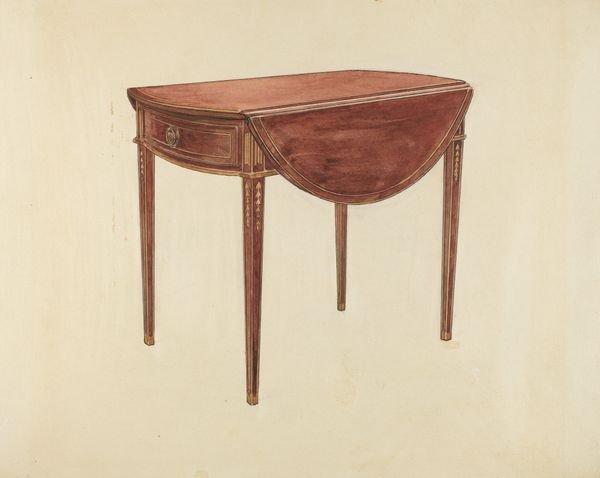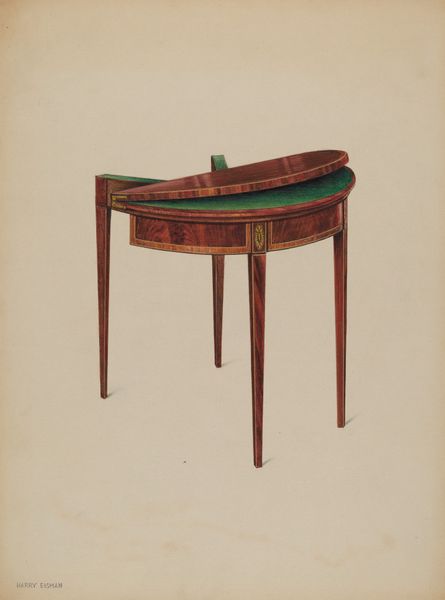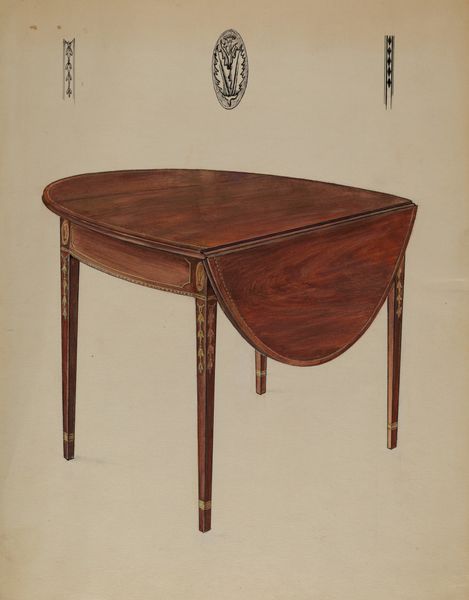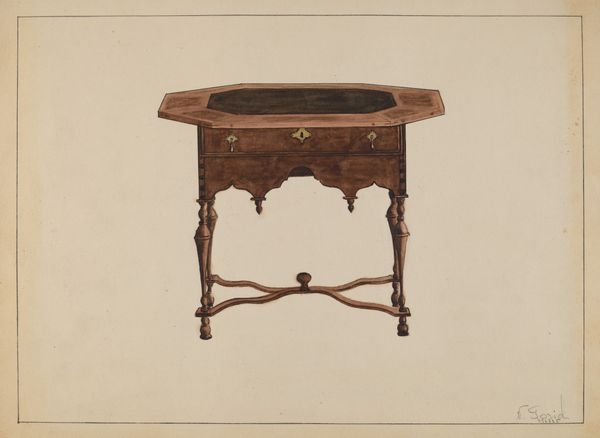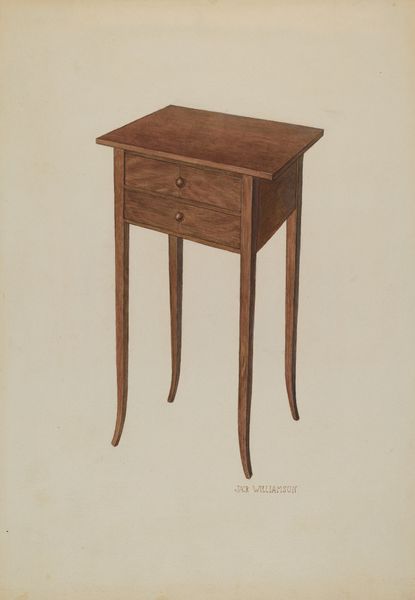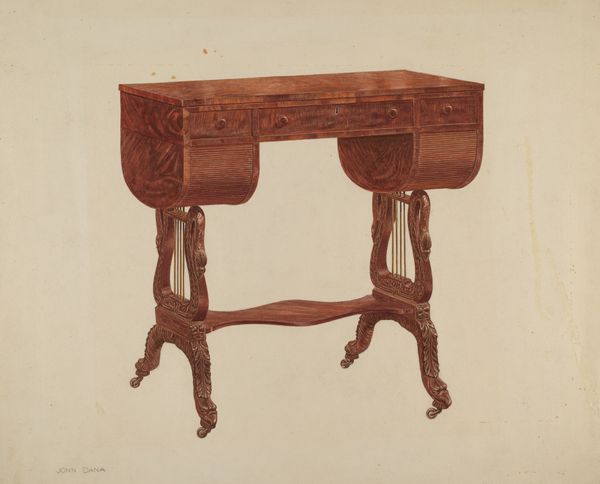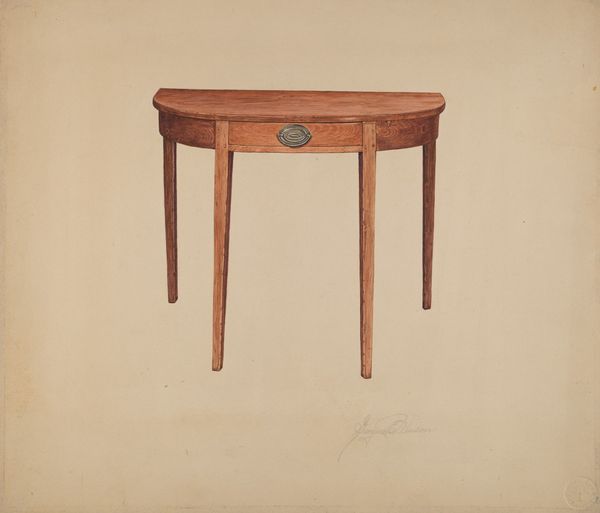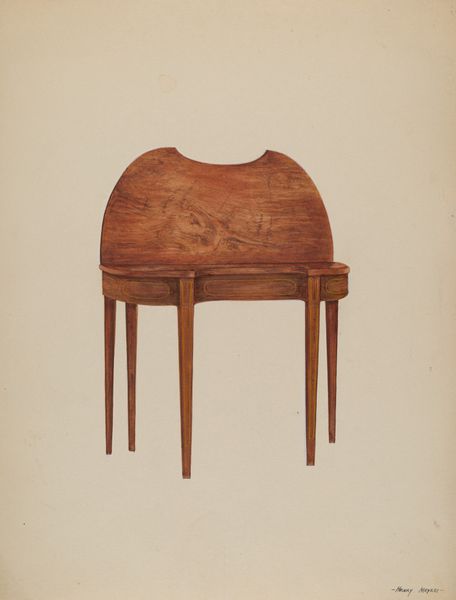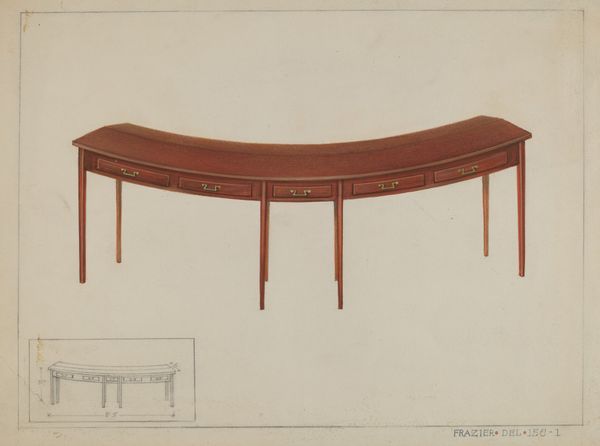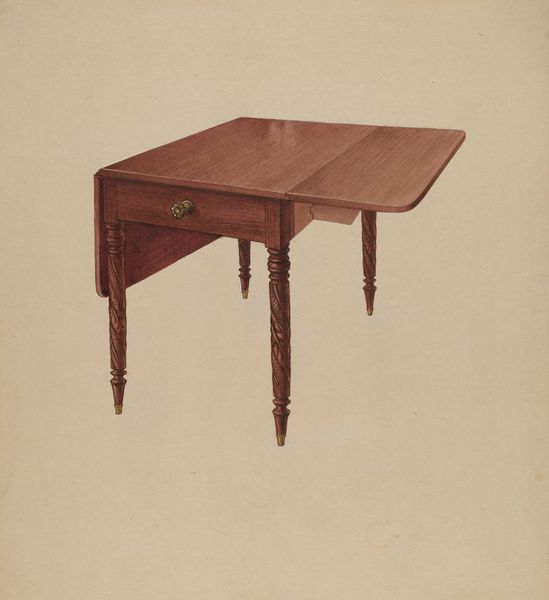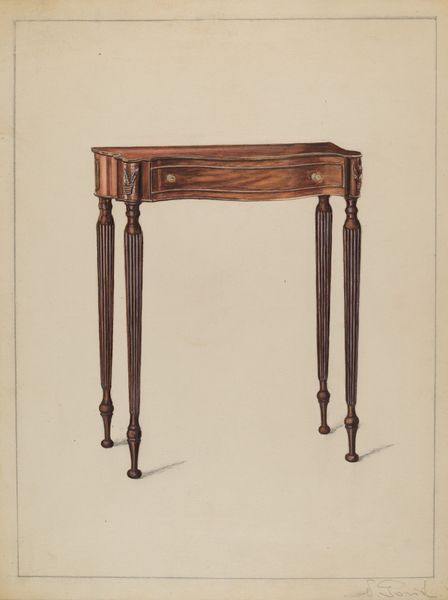
drawing
#
drawing
#
aged paper
#
toned paper
#
water colours
#
charcoal drawing
#
possibly oil pastel
#
underpainting
#
ceramic
#
watercolour illustration
#
positive shape
#
watercolor
Dimensions: overall: 22.7 x 29.5 cm (8 15/16 x 11 5/8 in.) Original IAD Object: 44"high; 37 1/2"wide 29 3/4"long
Copyright: National Gallery of Art: CC0 1.0
Curator: Welcome. Here we have Ulrich Fischer’s "Pembroke Table," created around 1937, rendered with watercolour and possibly oil pastel, as well as charcoal drawing on toned paper. Editor: My first impression is its restrained elegance, a sort of quiet luxury in the delicate linework and subtle tonal gradations. The draughtsmanship focuses sharply on the objectness of the piece. Curator: Indeed, note how Fischer has employed underpainting to establish depth and form, grounding his composition by letting a positive shape define the figure on this aged paper. Editor: But what about its functionality? How does this piece engage with social practices? Was this perhaps a preparatory study? The detail given to the marquetry seems almost reverential, imbuing it with purpose. Curator: One could speculate on preparatory intentions for ceramic or related manufacture given the symmetry. And further explore art’s power to ennoble humble items with focused observation and skill through geometric construction. Editor: That’s interesting! How its purpose or possible commission might influence our reception of this piece. Were such tables status symbols in 1937? How were they viewed differently across economic lines? Curator: Context clearly holds merit; however, let’s not ignore its autonomous values. Examine the relationship between the organic, curvilinear elements and stricter angular shapes; a simple palette generating understated grandeur. Editor: Yet the date implicates broader social changes: shifting aesthetics between post-war design, mass manufacturing implications of industrialisation and societal functions for art in inter-war design trends. Curator: Regardless, a harmonious tension prevails in "Pembroke Table," with the texture further accentuated due to media application enhancing depth perceptions. Editor: Agreed. I’m intrigued by the drawing's subtle hints at broader narratives through domestic functionality represented in these pieces and socio-cultural history imbuing common artifacts using fine draughtsmanship and tonal colour combinations to establish space in this example of art, design, and society. Curator: I leave appreciating the way these understated features encourage visual delight—allowing the materiality to quietly highlight craftsmanship over time, providing understated elegance when examining visual components carefully.
Comments
No comments
Be the first to comment and join the conversation on the ultimate creative platform.
